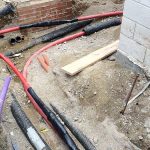Solvent Waste Management for Automotive Shops
Solvent waste management is a critical concern for Australian automotive shops, as improper handling and disposal of solvents can lead to severe environmental consequences, health risks for workers, and potential legal liabilities. This comprehensive guide looks as the intricacies of solvent waste management, emphasising best practices for minimisation, regulatory compliance, and responsible disposal.
Understanding Solvent Waste
Solvents are substances used to dissolve other materials, such as paints, degreasers, and adhesives, and common solvents employed in automotive workshops include acetone, toluene, xylene, and methyl ethyl ketone. These substances, while essential for various tasks, are often hazardous and can release harmful vapours into the atmosphere when not handled correctly.
Minimising Solvent Use: A Proactive Approach
One of the most effective strategies for reducing solvent waste is to minimise its usage from the outset. Automotive shops can adopt several practices:
Low-VOC Solvents: Prioritise the use of low-VOC (volatile organic compound) solvents to minimise emissions. Low-VOC solvents evaporate more slowly, reducing the amount of solvent released into the air.
Water-Based Alternatives: Whenever feasible, opt for water-based alternatives to solvent-based products. These are generally less hazardous and easier to dispose of. Water-based paints, for instance, have significantly lower VOC emissions and are less toxic.
Proper Ventilation: Ensure adequate ventilation in work areas to dilute and disperse solvent vapours. Effective ventilation systems, such as exhaust fans and air filtration systems, can significantly reduce worker exposure.
Regular Maintenance: Maintain equipment to prevent leaks and spills, which can lead to significant solvent waste. Regular inspections, cleaning, and repairs can help identify and address potential issues.
Solvent Recovery Systems: Implement solvent recovery systems to capture and reuse solvents, reducing the need for fresh supplies. Solvent recovery systems can significantly reduce solvent consumption and waste generation.
Regulatory Compliance: A Legal Imperative
Australian automotive shops are subject to a range of regulations governing solvent waste management. Some of these include:
The Work Health and Safety (WHS) Act 2011: This legislation mandates employers to provide a safe working environment for employees, including protection from hazardous chemicals. When it comes to solvents, compliance with WHS regulations includes proper training, labelling, and storage of solvents.
The Environment Protection and Biodiversity Conservation Act 1999 (EPBC Act): This Act regulates the handling and disposal of hazardous substances, including solvents. The EPBC Act sets national environmental standards and guidelines for the management of hazardous waste.
State and Territory Environmental Regulations: Specific regulations may apply at the state and territory level, often incorporating stricter standards. For example, some states may have specific regulations regarding the disposal of certain types of solvents.
Best Practices for Solvent Waste Storage and Handling
The proper storage and handling of solvent waste is crucial to prevent accidents and environmental contamination:
Designated Storage Areas: Establish designated storage areas for solvent waste, ensuring they are well-ventilated, secure, and away from ignition sources. Storage areas should be clearly marked and accessible only to authorised personnel.
Container Labelling: Clearly label all containers with the type of solvent, hazard warnings, and disposal instructions. Labels should be durable and easy to read, even in adverse conditions.
Spill Kits: Keep spill kits readily available to respond to accidental spills promptly and effectively. Spill kits should contain absorbent materials, protective gloves, and other necessary equipment.
Training and Education: Provide regular training to employees on safe handling, storage, and disposal procedures for solvents. Training should cover topics such as hazard identification, personal protective equipment, emergency procedures, and waste minimisation techniques.
Choosing Appropriate Disposal Methods
The choice of disposal method depends on the type and quantity of solvent waste:
On-Site Recycling: Some solvents, particularly those that are clean and uncontaminated, can be recycled on-site. On-site recycling can reduce disposal costs and minimise the environmental impact.
Off-Site Recycling: Solvent waste can be sent to licensed waste management facilities for recycling and recovery via an accredited waste management company such as Clarence Valley Septics. Off-site recycling is often the most environmentally friendly option for large quantities of solvent waste.
Incineration: Incineration is a controlled process that destroys hazardous waste, including solvents. However, it should be used as a last resort and only under strict regulatory guidelines. Incineration can generate air pollution and should be carefully monitored and controlled.
Landfill Disposal: Landfill disposal is generally discouraged for solvent waste due to its potential to leach into groundwater and soil, and landfill disposal should be avoided whenever possible, as it can have long-term environmental consequences.
The Role of Technology in Solvent Waste Management
Advancements in technology are offering innovative solutions for solvent waste management:
Real-time Monitoring Systems: Real-time monitoring systems can track solvent usage, identify potential leaks, optimise inventory management, and help prevent accidents and reduce waste.
Automated Dispensing Systems: Automated dispensing systems can minimise manual handling and reduce the risk of spills and improve accuracy and efficiency.
Advanced Treatment Technologies: Advanced treatment technologies, such as solvent distillation and adsorption, can recover and reuse valuable solvents, and these types of technology can reduce the volume of waste generated and minimise disposal costs.
Conclusion
Effective solvent waste management is essential for Australian automotive shops to protect the environment, safeguard worker health, and comply with regulatory requirements. By adopting best practices for minimisation, storage, handling, and disposal, workshops can significantly reduce their environmental impact and contribute to a sustainable future. We recommend that businesses stay informed about the latest regulations and technologies and continue to improve their solvent waste management practices. Contact Clarence Valley Septics if you have any questions or need any assistance with your solvent waste management.


